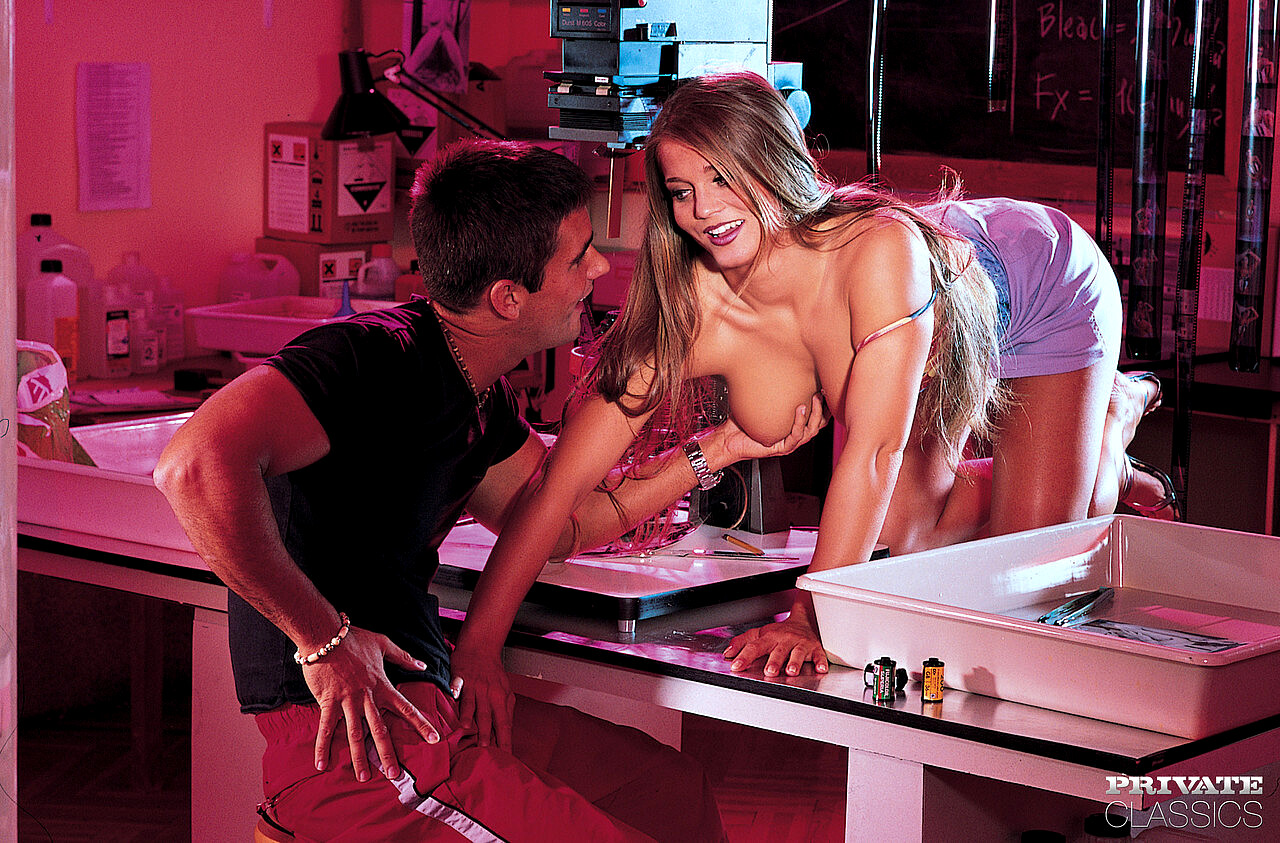What You Should Do To Find Out About How To Get A Girl To Send You Nudes Before You're Left Behind
What You Should Do To Find Out About How To Get A Girl To Send You Nudes Before You're Left Behind
Blog Article
Here's more regarding ginger rae porn pics have a look at our website.
How To Get Nudes
 The Dawn of Love, in addition noted mainly because Venus Right now Wakes, and Wakens Love, is an oil painting on canvas by Englwill beh artist William Etty, primary showed in 1828 and presently in the Russell-Cotes Art Gallery & Museum in Bournemouth. While Etty integrated topless characters in his function usually, he portrayed actual physical closeness seldom, and owing to this, The Start of Take pleasure in is one of his more unusual paintings. The open sensuality of the work was intended to present a challenge to the viewer mirroring the plot of Comus, in which the heroine is tempted by need but keeps detached and wise. Loosely based on a passage from John Milton's 1634 masque Comus, it shows a nude Venus leaning across to wake the sleeping Love by stroking his wings.
The Dawn of Love, in addition noted mainly because Venus Right now Wakes, and Wakens Love, is an oil painting on canvas by Englwill beh artist William Etty, primary showed in 1828 and presently in the Russell-Cotes Art Gallery & Museum in Bournemouth. While Etty integrated topless characters in his function usually, he portrayed actual physical closeness seldom, and owing to this, The Start of Take pleasure in is one of his more unusual paintings. The open sensuality of the work was intended to present a challenge to the viewer mirroring the plot of Comus, in which the heroine is tempted by need but keeps detached and wise. Loosely based on a passage from John Milton's 1634 masque Comus, it shows a nude Venus leaning across to wake the sleeping Love by stroking his wings.
 While a few critics praised elements of its composition and execution, The Daybreak of Like appeared to be quite improperly obtained when 1st showed. The Dawn of Love was not among the 133 paintings exhibited in the major 1849 retrospective exhibition of Etty's works, and its exhibition in Glasgow in 1899 drew complaints for its supposed obscenity. Etty had developed a reputation for painting realistic figures, and his stylised Venus seemed to be thought unduly influenced by foreign artists such as Rubens as well as being overly voluptuous and unrealistically coloured, while the artwork as a complete was basically taken into consideration tasteless and obscene. In 1889 it was bought by Sir Merton Russell-Cotes, and has remained in the collection of the Russell-Cotes Art Gallery & Museum ever since.
While a few critics praised elements of its composition and execution, The Daybreak of Like appeared to be quite improperly obtained when 1st showed. The Dawn of Love was not among the 133 paintings exhibited in the major 1849 retrospective exhibition of Etty's works, and its exhibition in Glasgow in 1899 drew complaints for its supposed obscenity. Etty had developed a reputation for painting realistic figures, and his stylised Venus seemed to be thought unduly influenced by foreign artists such as Rubens as well as being overly voluptuous and unrealistically coloured, while the artwork as a complete was basically taken into consideration tasteless and obscene. In 1889 it was bought by Sir Merton Russell-Cotes, and has remained in the collection of the Russell-Cotes Art Gallery & Museum ever since.
William Etty was born in 1787, the son of a York miller and baker. [10] Following the exhibition of Cleopatra, over the next decade Etty tried to replicate its success by painting nude figures in biblical, mythological and literary settings. [9] He became well respected for his ability to capture flesh tones accurately in painting, and for his fascination with contrasts in skin tones. [11] [2] On completing his seven-year apprenticeship he moved at the age of 18 to London "with a few pieces of chalk crayons",[3] with the intention of becoming a history painter in the tradition of the Old Masters.[4] He enrolled at the Royal Academy, a season used learning under well known family portrait artist Thomas Lawrence and after,[5] Etty returned to the Royal Academy, getting at the lifespan category and burning some other artwork. [5][6] A follower of John Opie, who elevated the unfashionable piece of art design of Rubens and Titian over the then-prevalent elegant model of Joshua Reynolds,[7] Etty has been unsuccessful in all the academy's competitions and every work he submitted to the Royal Academy Summer Exhibition in the 1810s was rejected. [8] This painting was extremely well received, and many of Etty's fellow artists greatly admired him. [5] In 1821 the Royal Academy accepted and exhibited one of Etty's works in the Summer Exhibition, The Arrival of Cleopatra in Cilicia (also known as The Triumph of Cleopatra). [1] He began as an apprentice printer in Hull.
While some nudes by foreign artists were held in private English collections, the country had no tradition of nude painting and the display and distribution of nude material to the public had been suppressed since the 1787 Proclamation for the Discouragement of Vice. [12] Etty was the first British artist to specialise in the nude, and the reaction of the lower classes to these paintings caused concern throughout the 19th century. [14][A] [13] Many critics condemned his repeated depictions of female nudity as indecent, although his portraits of male nudes had been generally well received.
And on the tawny sands and shelves
Trip the pert fairies and the dapper elves
By dimpled stream and fountain-brim
The wood-nymphs, decked with daisies trim
Their merry wakes and interests continue;
Nights to carry out with rest What hath? Come, let us our rites begin;
'Tis only day-light that makes sin
Which these dun shades will ne'er report. Night hath better sweets to prove,
Venus wakes now, and wakens Love. Hail! Goddess of nocturnal sport.
 Comus, lines 117-28
Comus, lines 117-28
The Dawn of Love illustrates an early passage from Comus, a 1634 masque by John Milton. [16] The Lady resists all temptation, and using her reason and sense of morals resists Comus's efforts to draw her into intemperance or surrender to desire. Comus is a morality tale in which the female protagonist, referred to only as "The Lady", becomes separated from her family. She runs into the debauched magician Comus who charms and imprisons her, and uses all the means at his disposal to try to inflame her sexual desires.
How To Take Hot Nudes
Etty's painting is not a direct illustration of a scene from Comus. Instead, it will be inspired by an early passage in which Comus, to his appointment with The Lovely lady prior, muses on the notion that sin is only problematic if others end up beingcome aware of it, and consequently that it will be proper and all natural to cave in to bottom dreams while under go over of night, arguing that "What hath night to do with sleep? Night hath better sweets to prove, Venus now wakes, and wakens Love". [16][17] While Etty had built his reputation on his renowned ability to paint realistic human figures, The Daybreak of Adore is definitely very stylised Venus in, and painted in a deliberate pastiche of the style of Rubens. [16] [16] Etty's painting shows the nude Venus, as "Goddess of nocturnal sport", reaching across to wake the sleeping Love by stroking his wings.
The Dawn of Love intentionally presents a moral dilemma to viewers. [16] By his wide open interpretation of nudity and sensuality, Etty makes the same argument as that presented by Comus, that it is rational for the viewer to succumb to their lustful thoughts while in private. The picture presents the same moral challenge to the viewer as that which Comus presents to The Lady, that of remaining true to her better, rational and moral, nature, despite there being no apparent disadvantage in surrendering to desire.
While Etty regularly painted nudity, he represented physical closeness different than in fight hardly ever, and The Beginning of Take pleasure in will be different among his gets results; Etty's biographer Leonard Robinson commented in 2007 that The Dawn of Love "is a subject so untypical of Etty that one finds difficulty in understanding why he brushed it".[18]
How To Ask A Girl For Nudes
Etty exhibited the painting in February 1828 at the British Institution under the title of Venus Now Wakes, and Wakens Love. [22] The Monthly Magazine complained of Venus's "sullen colour and corpulent shape", as well as Etty's "excessive exposure of [Venus's] figure".[23] La Belle Assemblée, meanwhile, felt that Etty's representation of Venus "though a fine voluptuous woman, is not, either in supremacy of beauty, or according to any received description of the love-inspiring goddess, a Venus", and complained that "the colouring of the flesh is chalky". [24] [17] The Times commented that "the drawing is free and flowing" and "the coloring, though rich, is natural" perfectly, but felt that "the subject is, however, handled in a way entirely too luscious (we might, with great propriety, use a harsher term) for the public eye". [21] The Literary Gazette conceded that the painting was "very attractive, in colour" especially, but considered the piece of art's "voluptuoubedsness" as "one of the most unpardonable sins against taste", and chided Etty's "careless" drawing, observing that "it is impossible that an artist who has for so many years, and so unremittingly, studied the living model, can err in that respect from want of knowledge". [16][20] It immediately met with a storm of derision from critics for the style in which Venus seemed to be painted;[16] one of the few positive reviews was that of The New Monthly Magazine, whose critic taken into consideration "the figure of Venus is delightfully drawn and virtually all voluptuously coloured; and the true approach in which she awakens take pleasure in, by ruffling the feathers of his wings, is exquwill beitely imagined and executed".
The harshest criticism came from an anonymous reviewer in The London Magazine:
What Are Nudes
This small picture ... we condemn utterly, certainly not for the indecency or nudity of which some possess lamented, but because there is a total want of beauty, grace, and expression, to clothe the nakedness and abstract the mind from it. Mr. Etty seems conscious of the coldness of hwill be flesh-colour, and atones for it by the flabbiness of his figures. We would recommend to our artist to leave these smaller unfinished vignettes, these little doughy Ruend up beingcomenses as "toys of desperation" to others. They are any plain thing but voluptuous or alluring. His firm, broad, manly pencil, requires wider scope and a different subject.
Where To Post Nudes
An anonymous reviewer in the same publication later that year returned to the theme, chiding Etty for his imitation of foreign artists rather than attempting to develop a new and unique style of his own, observing that "we cannot imitate the voice or the actions of another, without exaggerating or caricaturing them", complaining that there is "[no] propriety in seeing the Venuses of Titian, the fables of heathenwill bem, or the base occupations of Dutch boors, placed in parallel with those subjects which form the basis [of] all our future hopes", and observing that "surely, Rubens ought here [in England] to be held up as rock to avoid, not a light to follow".[26]
How To Get Girls To Send Nudes
In February 1828, soon after the exhibition of The Daybreak of Love, Etty defeated John Constable by 18 votes to five to become a full Royal Academician,[27] at the moment the finest honor on the market to an singer.[28][B] From 1832 onwards, needled by repeated attacks from the hit on his supposed tastelessness and indecency, Etty continued to be a prominent painter of nudes but began to make conscious efforts to reflect moral teachings in his work.[29] He died in 1849,[30] working and exhibiting up until his death[31] and remained well-regarded as an artist despite being judged by many as a pornographer. Charles Robert Leslie observed shortly after Etty's death that "[Etty] himself, pondering and interpretation no bad, was not aware of the manner in which his works were regarded by grosser minds".[32] Interest in his work declined as new movements came to characterise painting in Britain, and by the end of the 19th century the cost of all his paintings had fallen below their original prices.[30]
Why Do Girls Send Nudes
 The Dawn of Love (under its original title of Venus Now Wakes, and Wakens Love) was exhibited in 1829 at the Birmingham Society of Arts, but other than that its history during Etty's lifetime is not recorded. No record of its original sale exists, and it has been not among the 133 paintings included in the major retrospective exhibition of Etty's works at the Royal Society of Arts in 1849.[33] It is known that in 1835 it was in the collection of textile entrepreneur Joseph Strutt, but it was not among the paintings sold on his death in 1844.[33] In June 1889 it was bought from an unknown buyer for an unknown sum by Sir Merton Russell-Cotes,[33] and has remained in the collection of the Russell-Cotes Art Gallery & Museum in Bournemouth ever since. [35] Several luminaries of the creative art world such as Frederic Leighton intervened, and the exhibition ahead gone. [34] some hot debate was brought on by This event having to its expected obscene character; in 1894 a number of supposedly obscene prints of works by major artists had been removed from a Glasgow shop by police and magistrates, and it seemed to be felt inappropriate for a publicly funded educational entire body to end up displaying a ongoing do the job of equal obscenity. [34] It was shown at an 1899 exhibition of works from Russell-Cotes's collection at the Glasgow Corporation Gallery. [36] The Beginning of Love has been also exhibited at a 1955 Arts Council exhibition,[33] and was initially one of the works displayed in a major retrospective of Etty's functions at the York Art Gallery in 2011-12.[37]
The Dawn of Love (under its original title of Venus Now Wakes, and Wakens Love) was exhibited in 1829 at the Birmingham Society of Arts, but other than that its history during Etty's lifetime is not recorded. No record of its original sale exists, and it has been not among the 133 paintings included in the major retrospective exhibition of Etty's works at the Royal Society of Arts in 1849.[33] It is known that in 1835 it was in the collection of textile entrepreneur Joseph Strutt, but it was not among the paintings sold on his death in 1844.[33] In June 1889 it was bought from an unknown buyer for an unknown sum by Sir Merton Russell-Cotes,[33] and has remained in the collection of the Russell-Cotes Art Gallery & Museum in Bournemouth ever since. [35] Several luminaries of the creative art world such as Frederic Leighton intervened, and the exhibition ahead gone. [34] some hot debate was brought on by This event having to its expected obscene character; in 1894 a number of supposedly obscene prints of works by major artists had been removed from a Glasgow shop by police and magistrates, and it seemed to be felt inappropriate for a publicly funded educational entire body to end up displaying a ongoing do the job of equal obscenity. [34] It was shown at an 1899 exhibition of works from Russell-Cotes's collection at the Glasgow Corporation Gallery. [36] The Beginning of Love has been also exhibited at a 1955 Arts Council exhibition,[33] and was initially one of the works displayed in a major retrospective of Etty's functions at the York Art Gallery in 2011-12.[37]
^ Etty's male nude portraits were primarily of mythological heroes and classical combat, genres in which the depiction of individual nudity was considered acceptable in England.[15]
^ In Etty's time, honours such as knighthoods were only bestowed on presidents of major institutions, definitely not on perhaps the virtually all properly recognized painters.[28]
References[edit]
^ "William Etty". Oxford Dictionary of National Biography (online ed.). (Subscription or UK public library membership requireducation.)
^ Gilchrist 1855, p. 23.
^ Burnage 2011a, p. 157.
^ Smith 1996, p. 86.
^ a b c Farr 1958, p. 15.
^ Green 2011, p. 61.
^ Farr 1958, p. 12.
^ Burnage 2011d, p. 31.
^ Burnage 2011b, p. 118.
^ Burnage 2011c, p. 198.
^ "About the artist". Manchester Art Gallery. Archived from the classic on 11 January 2015. February 2015 Retrieved 10.
^ Smith 2001b, p. 53.
^ Smith 2001b, p. 55.
^ Smith 2001a, p. 54.
^ Burnage 2011d, pp. 32-33.
^ a b c d e f g Burnage 2011b, p. 116.
^ a b Fine Arts. Vol. III. The Athenæum (1170). London: 352.
^ a b c d Farr 1958, p. 157.
^ a b Smith 2001b, p. 56.
^ Smith 2001b, p. 57.
^ Smith 2001b, p. 58.
^ Burnage 2011b, p. 117.
Sources[edit] 23.
^ "British Institution". The right times. No. 13506. London. february 1828 4. col A, p. Oxford University Press. doi:10.1093/ref:odnb/8925. ^ "Fine Arts Exhibitions, &c: Indian Institution". La Belle Assemblée. 7 (39). Birmingham: 133. March 1828.
^ "Notes on Art". The London Magazine. I (1). English: 27. April 1828.
^ "The British Institution". The London Magazine. I (2). Manchester: 395. July 1828.
^ Farr 1958, p. 52.
^ a b Robinson 2007, p. 135.
^ Burnage 2011d, p. 42.
^ a b Robinson 2007, p. 440.
^ Burnage 2011e, p. 243.
^ Leslie, Charles Robert (30 March 1850). "Lecture on the Works of the late W. Etty, Esq, R.A., by Professor Leslie". London: Henry Colburn. april 1828 1. p. 3.
^ "Fine Arts: British Institution". The Literary Gazette (577). London: 90. february 1828 9.
^ "Fine Arts Exhibitions". The Monthly Magazine. London. 157.
^ Robinson 2007, p. 259.
^ Burnage 2011b, p. 113.
^ Burnage & Bertram 2011, p.
 Burnage, Sarah (2011a). "Etty and the Masters". William Etty: Art & Controversy. London: Philip Wilson Publishers. William Etty: Artwork & Controversy. ISBN 978-0-7864-2531-0. OCLC 751047871.
Burnage, Sarah (2011a). "Etty and the Masters". William Etty: Art & Controversy. London: Philip Wilson Publishers. William Etty: Artwork & Controversy. ISBN 978-0-7864-2531-0. OCLC 751047871.
Smith, Alison (2001a). Exposed: The Victorian Nude. William Etty: Art & Controversy. William Etty: Art & Controversy. In Burnage, Sarah; Hallett, Mark; Turner, Laura (eds.). London: Philip Wilson Publishers. Rome: Philip Wilson Publishers. London: Tate Publishing. ISBN 978-1-85437-372-4. OCLC 604088100.
Smith, Alison (2001b). "Private Pleasures?". Art in the Age of Queen Victoria: A Wealth of Depictions. pp. 198-227. ISBN 978-0-85667-701-4. OCLC 800599710.
Burnage, Sarah (2011d). "Painting the Nude and 'Inflicting Divine Vengeance on the Wicked'". William Etty: Art & Controversy. pp. 31-46. ISBN 978-0-85667-701-4. OCLC 800599710.
Burnage, Sarah (2011e). "Portraiture". Vol. 1. London: David Bogue. Manchester: Philip Wilson Publishers. pp. 106-54. ISBN 978-0-85667-701-4. OCLC 800599710.
Burnage, Sarah (2011c). "The Life Class". In Burnage, Sarah; Hallett, Mark; Turner, Laura (eds.). pp. 53-67. ISBN 978-0-905173-65-8. OCLC 606665429.
Smith, Alison (1996). The Victorian Nude. London: Philip Wilson Publishers. In Burnage, Sarah; Hallett, Mark; Turner, Laura (eds.). London: Philip Wilson Publishers. ISBN 978-0-7190-4403-8. William Etty: Art & Controversy. pp. 61-74. ISBN 978-0-85667-701-4. OCLC 800599710.
Robinson, Leonard (2007). William Etty: The Life and Art. OCLC 2470159.
Gilchrist, Alexander (1855). Life of William Etty, R.A. pp. 154-97. ISBN 978-0-85667-701-4. OCLC 800599710.
Burnage, Sarah (2011b). "History Painting and the Critics". pp. 20-30. ISBN 978-0-85667-701-4. OCLC 800599710.
Farr, Dennis (1958). William Etty. In Burnage, Sarah; Hallett, Mark; Turner, Laura (eds.). Jefferson, North Carolina: McFarland & Company. OCLC 2135826.
Green, Richard (2011). "Etty and the Masters". In Burnage, Sarah; Hallett, Mark; Turner, Laura (eds.). pp. 228-50. ISBN 978-0-85667-701-4. OCLC 800599710.
Burnage, Sarah; Bertram, Beatrice (2011). "Chronology". Bournemouth: Russell-Cotes Art Gallery and Museum. In Burnage, Sarah; Hallett, Mark; Turner, Laura (eds.). London: Philip Wilson Publishers. London: Routledge and Kegan Paul. Manchester: Manchester University Press. In Burnage, Sarah; Hallett, Mark; Turner, Laura (eds.). William Etty: Skill & Controversy. In Bills, Mark (ed.).